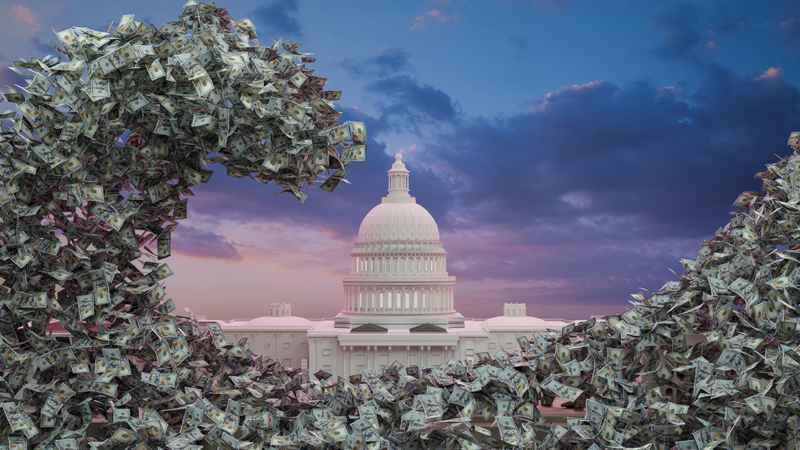Trending
More Easy Money Will Plunge Us into Stagflation

Thirty major central banks are expected to cut rates in the second half of 2024, a year when more than seventy nations will have elections, which often means massive increases in government spending. Additionally, the latest inflation figures show stubbornly persistent consumer price annualized growth.
In the United States, headline PCE inflation in February will likely grow by 0.4%, compared with a 0.3% rise in January, and consensus expects a 2.5% annualized rate, up from 2.4% in January. This is on top of the already 20% accumulated inflation of the past four years. Core inflation will likely show a 0.3% gain, according to Bloomberg Economics, which means an annualized 2.8%, building on top of the price increases of the past years.
Thirty central banks easing and seventy national governments increasing spending in an election year means more fuel for the inflation fire in a year in which money supply growth has bounced significantly from its 2023 lows.
Learn Why The Globalists Are Killing Their Own Monetary System
Central banks ignored monetary aggregates when they shrugged off the risk of inflation in 2020, and now they are, again, easing way too fast when the battle against inflation has not finished. Furthermore, the only real tool that central banks have used is hiking rates, because different parallel measures of money growth, including reverse repo liquidity injections, have kept money supply growth at an elevated rate even when the balance of the G7 central banks was moderating, albeit at a slower pace than announced.
Cutting rates may come too late because, by the time it is implemented, it will cause a double negative. Government deficits will be cheaper to refinance, bloating an already record-high public debt yet again, but those cuts may have little impact on small and medium enterprises and families because they suffer significantly more from the accumulated effects of inflation, which means weaker margins, more difficulties to make ends meet, and impoverishment.
We must also remember that these persistent levels of official inflation come after relevant tweaks in the calculation of the consumer price index. We certainly know one thing: consumers do not pay attention to the annualized rate of growth in prices, but to the accumulated level of destruction of their purchasing power, and everyone, from Europeans to Americans, knows that they have become artificially poorer by the insane fiscal and monetary policies implemented in 2020.
Nobody who takes inflation seriously would even consider easing in an election year, adding trillions of dollars of deficit spending to the fire of inflation. Furthermore, the history of inflation warns us about giving up easily and too fast.
The Fed is making a big mistake by cheering the headline economic figures that come from disguising a private sector recession with a massive increase in public debt and weakening employment figures embellished by temporary jobs and public sector hiring. Additionally, it is making a mistake by giving dovish signals that make market participants take more risk. There has been no relevant reduction in the money supply if we include the different layers of liquidity injections. Announcing forthcoming rate cuts will certainly make speculative debt rise but will hardly change the credit demand from the backbone of the economy, small businesses, and families.
Since the US government has rejected any calls for normalization and instead added more deficits and debt as if rising bond yields were not a problem, citizens and businesses have already suffered greatly from ongoing inflation and rate increases. As such, the rate cuts will help an already bloated government spending and the zombie corporations that keep access to capital markets. Everyone else will be hurt both ways, with inflation and lower access to credit.
You may think all the above problems are policy mistakes, but they are not. This is a slow process of nationalizing resources. Inflation and artificial money creation through deficits and monetization are a gradual transfer of wealth from real salaries and deposit savings to the government. You are basically becoming poorer to sustain an ever-increasing government size. The next time you read that massive deficits and monetary easing are good policies for the middle class, ask yourself why you find it harder each year to pay for goods and services. The mistakes made in 2020–2024 will cost the middle class many more taxes, even if the government promises it will only be “taxes on the rich,” the oldest gimmick to raise your taxes. More taxes, persistent inflation, the hidden tax, and the loss of value of your wages. That is “easing” for you. A private sector recession with headline economic figures bloated by government debt. The recipe for stagflation.
Economist Warns Rollout Of The Mark Of The Beast Being Prepared By Central Bank
Read the full article here


















